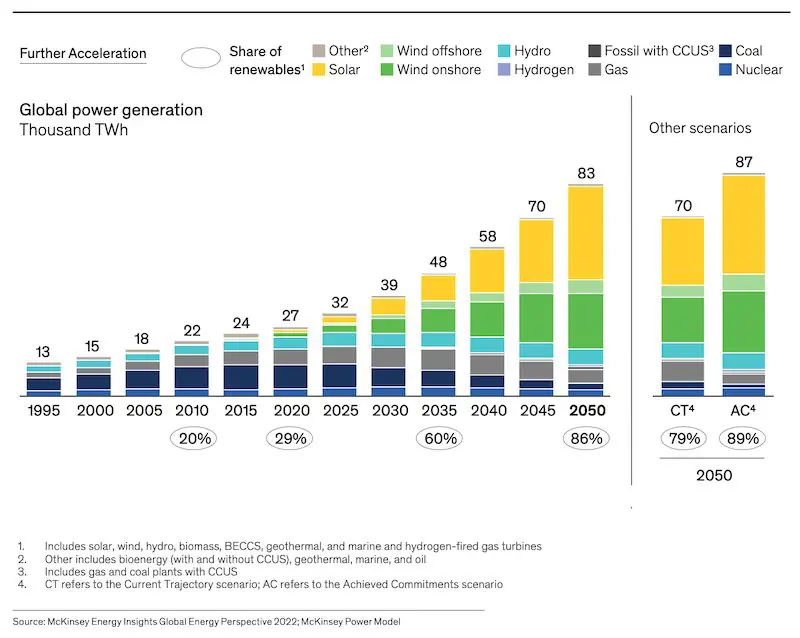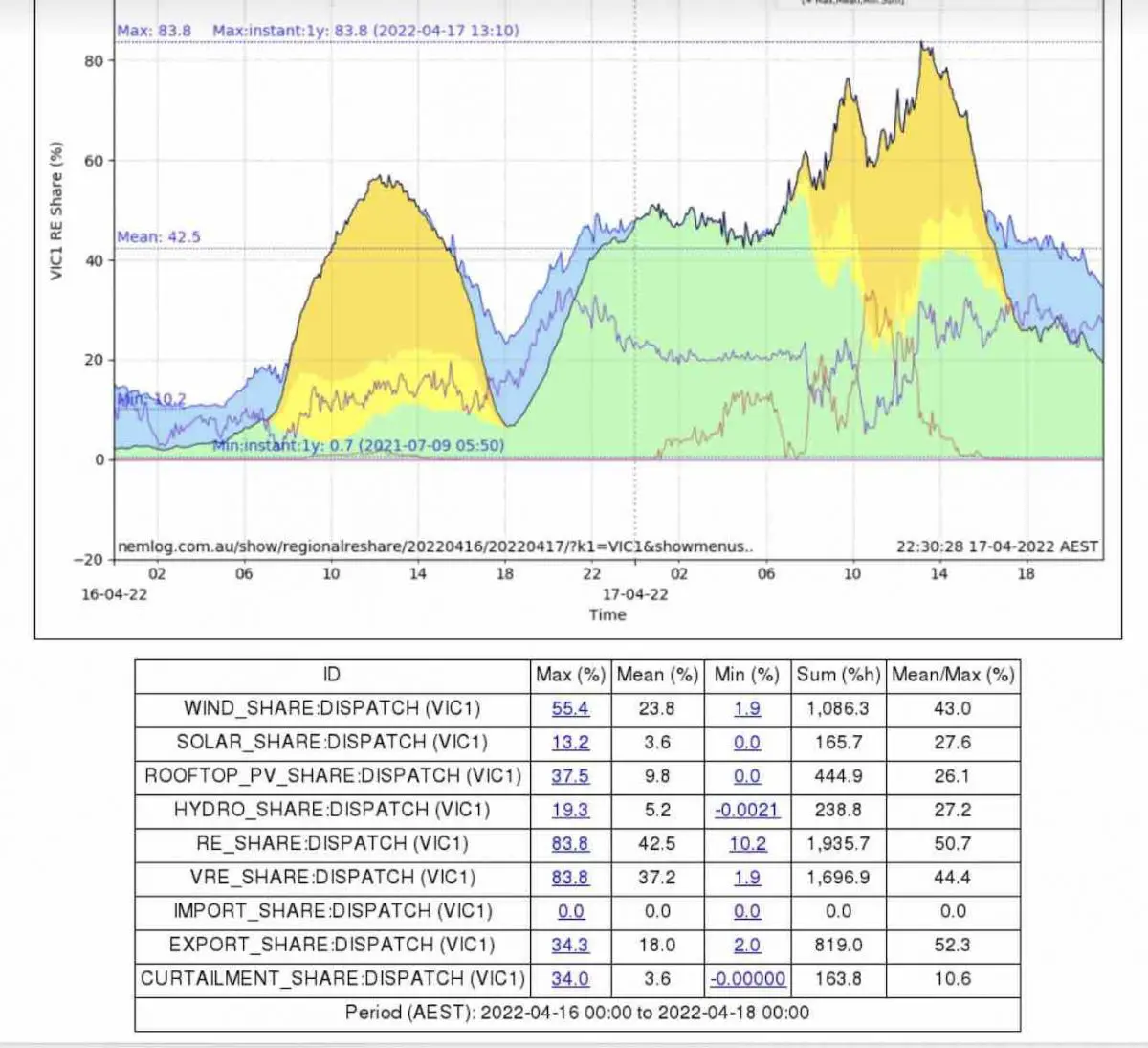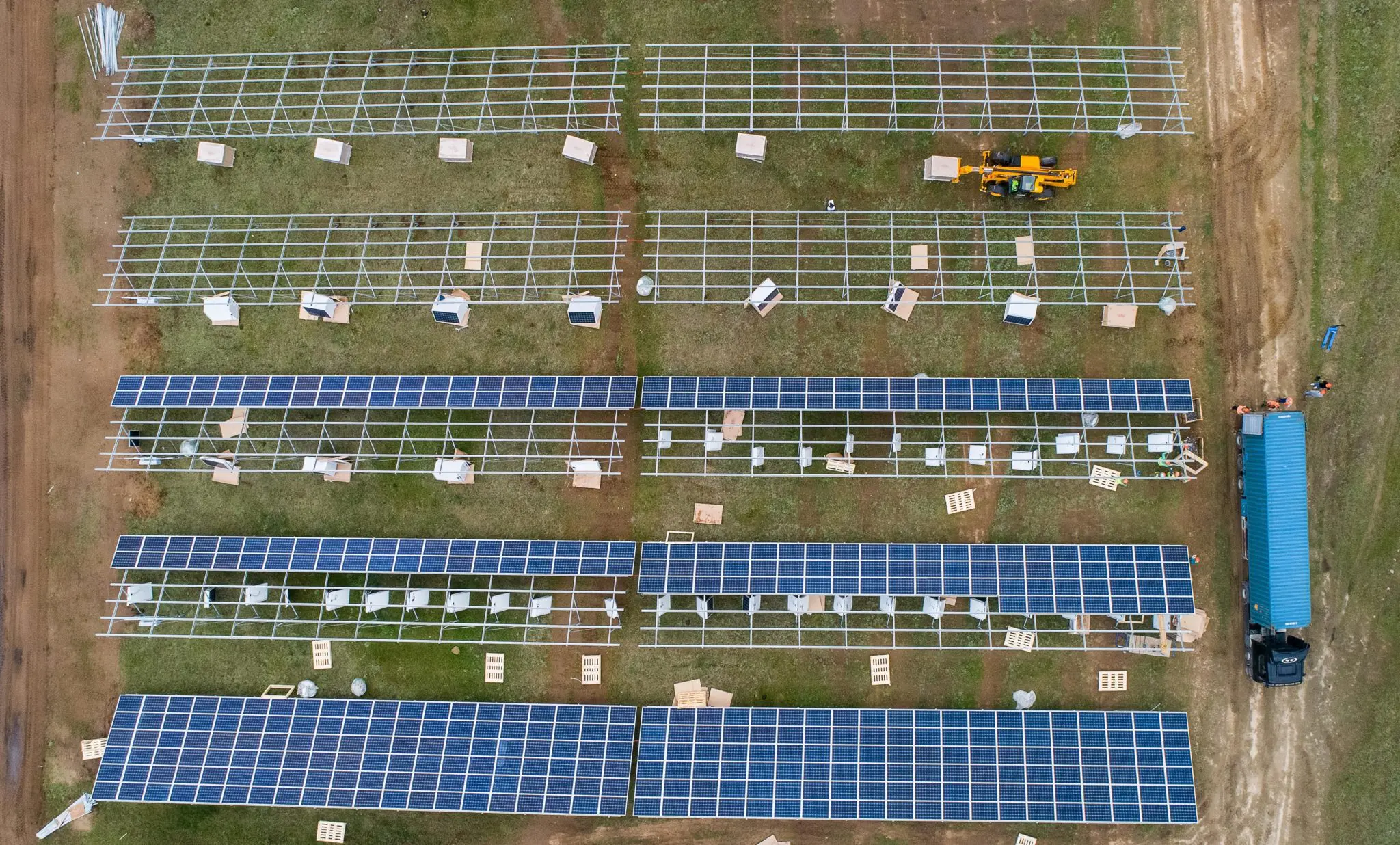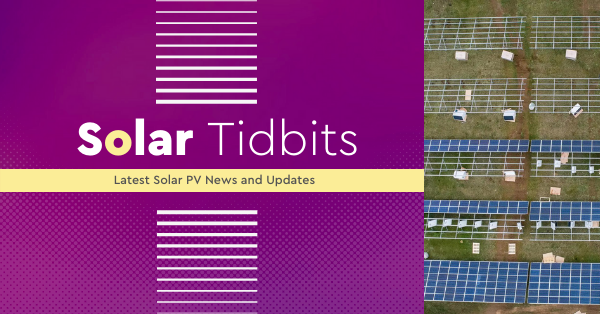In this week’s issue of Solar Tidbits: (1) Renewables to be “the new baseload” by 2030 (2) Victoria Achieves Record Wind and Solar Share of 83.8% (3) Wind and Solar Peaks at 10% of Global Power Production for the First Time
Renewables to be “The New Baseload” by 2030

Solar and wind power are on track to turn into the new baseload power supply for worldwide energy markets as soon as 2030, and to consign thermal generation from coal and gas to the role of back-up, says McKinsey.
In its 2022 Global Energy Perspective, leading global consultancy McKinsey and Company says clean energy is on track to represent half of the world’s power mix by 2030, and around 85% by 2050, because of the rising cost competitiveness of new solar and wind capacity.
McKinsey says that even despite the contention in Ukraine – and odd statements from certain Australian legislators that net-zero is “dead” – the long-term transition to low-carbon energy systems keeps on seeing solid momentum, and even further development.
More about this article: https://bit.ly/3MARvXO
Victoria Achieves Record Wind and Solar Share of 83.8%

Source: NEMLog
The state of Victoria has laid out another record share of renewables, reaching a peak of 83.8% of state demand last April 17.
As per data analyst Geoff Eldridge, from the data collection site NEMLog, the new record was laid out at 1.10 pm (AEST) with the wind the biggest contributor, followed by rooftop solar and large scale solar.
It beats the past record of 79.6% reached on October 27 last year and came as South Australia set another standard for that state’s grid of 136.6% instantaneous renewables earlier in the day.
More about this article: https://bit.ly/3vqlqfu
Wind and Solar Peaks at 10% of Global Power Production for the First Time

Photo credit: Canva
The portion of wind and solar in the world’s power production has surpassed 10% for the first time, as China and Japan joined exactly 50 different nations to surpass that level in 2021.
The new assessment, from the UK-based Ember, noticed that wind and solar are the quickest developing sources of power, and if kept up at current rates could convey sufficient capacity to help cap average global warming at around 1.5°C.
The issue is that in the previous year, fossil fuel production and emissions have also jumped after a Covid-caused hiatus, and more coal is being burned off the fact that gas has become excessively costly.
More about this article: https://bit.ly/3ksIJPu
Keep yourself in the loop! Get solar updates from us just when you need them. Follow us on our social media accounts and subscribe to our newsletter: https://linktr.ee/sunovagroup
See past solar tidbits here: https://bit.ly/SolarTidbits

